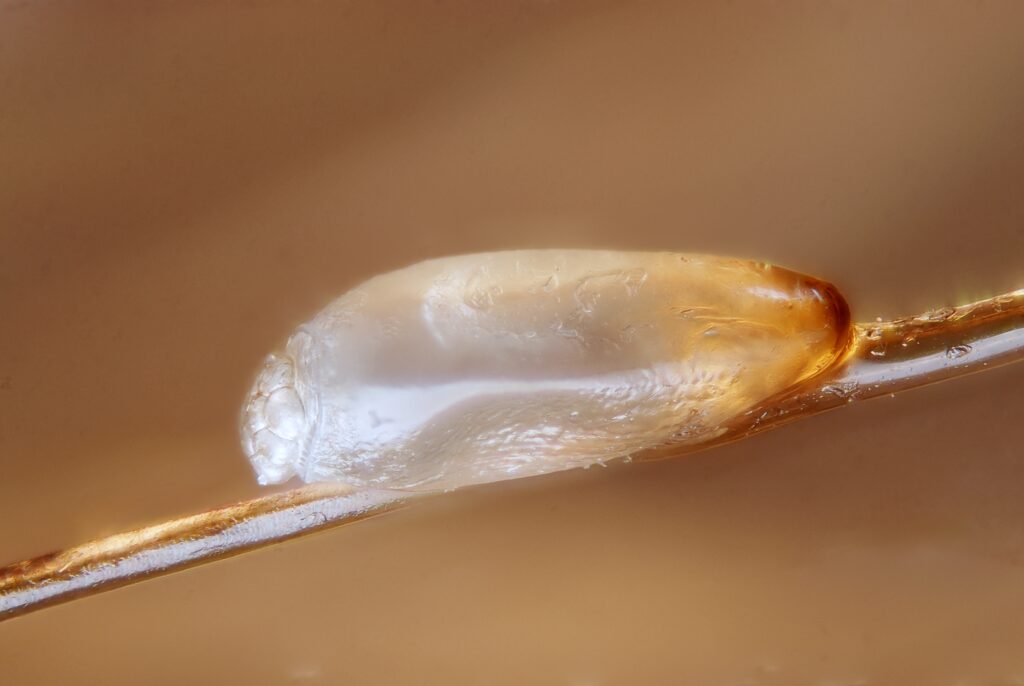Just saw the Apple presentation for my new Apple Watch Ultra 2. They tell me I have 3000 nits. I was like, what’s a “nit?” Not gonna lie. At first, I thought if my new Apple Watch Ultra 2 has 3000 of these things, I’ma prolly have to run to the drug store.
I looked up the word “nit” in a dictionary. The result? A nit is the egg or young form of a louse or other parasitic insect, especially the egg of a head louse attached to a human hair.
I thought, if my Apple Watch has 3000 of these things, I’ma prolly have to run to the drug store.

No, we’re not talking about head lice, but rather a piece of terminology used quite loosely in the tech world. A digital nit is the unit of measurement that describes how comparatively bright a television, smartphone, computer monitor, laptop screen, or another type of display is. The higher the number of nits, the brighter the display.
Nit comes from the Latin word nitere, meaning “to shine.” Not sure how that evolved into head louse eggs, but that’s an etymologist problem. Technically, nits are not an official unit of measurement since it’s not a part of the International System of Units (SI). The SI was adopted by the Eleventh General Conference of Weights and Measures in 1960, and the International Treaty of the Meter was signed in Paris way back on May 20, 1875 by seventeen countries, including the United States. There is a close official measurement that’s roughly the same as a nit called “candela per square meter.” But “nit” sounds A LOT better than “CPSM,” right?
Obviously (maybe not so obviously considering nit can also be a lice egg), “candela” is Latin for “candle.” One candela is equal to the brightness of a single average whale oil candle in complete darkness. Two candelas is equal to the brightness of two whale oil candles, and so on. So that’s one part of the equation. But a nit measures two things in combination:
- Luminous intensity (the candela), and
- Area (in square meters).
I can hear it now – Americans be like, “What’s a meter?”
So, to measure a nit, you need to measure the luminous intensity spread out over a certain surface area. One candela per square meter (or one nit) is the brightness of one whale oil candle shining onto a surface that measures one meter wide and one meter tall.
You can measure a nit by yourself. Turn off all the lights. Try to find a deceased whale. Make a single whale oil candle. Light it, in complete darkness, holding it up in front of a one square meter whiteboard. The amount of light that hits your board from the candle is equal to one nit. Now, just imagine trying to measure more than one nit. Sounds like a fun science project – for someone else’s kid.
And that may be where we got the word “Nitwit.” I cannot verify this, but the logic definitely supports my thesis.
Now, if you come from projector world like I do, you may ask, “Doesn’t lumens describe brightness?” I too thought we already had a unit of measurement for measuring light intensity. Most companies use lumens to measure the light intensity of light bulbs, flashlights, projectors, and more. So why do we need nits? Well, here’s the rub. Nits and lumens both measure light, but a little differently.
Lumens don’t measure light over a specific area like nits do. All lumens care about is the intensity of light coming from the source. Light bulbs, flashlights, and projectors are all measured in lumens. My home projector is about 2000 lumens, and it’s super bright. Nits measure the amount of resulting light coming from the wall or projector screen – with respect to the size.
Now that I’ve completely confused you, forget everything you just learned and just remember this:
The higher number of nits a display has, the brighter it will be.
More nits will give you a brighter image that you can see more clearly in a bright room or outdoors. But how many nits do you really need? Do I really need all the 3000 nits this Apple Watch Ultra 2 is going to give me? Well, that’s not so simple.
Digital Billboard sales people advertise you need about 5000 nits to make a screen visible on a sunny day. Billboards are kind of far away, so that sounds about right because light diffuses over space. So you’d think 3000 nits on a watch would give you one heck of a sun tan.
So that’s why counting nits is kind of important when it comes to watches and smartphones, which you’re more likely to use outdoors in the bright sunlight. A screen with a lot of nits will look bright and clear even on the sunniest of days. The iPhone 15 Pro Max goes up to 2,000 nits for peak brightness when used outdoors. You should be able to see the 3000 nits the Apple Watch Ultra 2 displays on the brightest day of the year on a white sandy beach.
How does the average person measure NITS? Instead of holding 3000 whale oil candles (impossibly tightly) away from a one square meter posterboard in a pitch-black room, it may be more helpful for a layman to convert nits to lumens for comparison’s sake. Apparently, 1 nit equals roughly 3.4 lumens. So to convert nits to lumens, simply multiply the number of nits by 3.4. So my Ultra 2 watch has 3000 nits, so that works out to just over 10,000 lumens. If you’ve ever been blinded by the lens of a home projector, which is typically under 2,000 lumens, you’ll realize 10,000 lumens is like staring into the sun.
Frankly, I’m concerned about corneal damage from looking at my watch. Fortunately, it doesn’t work that way. So no worries about corneal damage from your watch. All you need to know is that this thing is BRIGHT.
Oh, remember, the more nits you have, the more power it requires to illuminate the nittage (I just totally made that word up). Remember that when your battery drains quickly because your screen is too bright.




